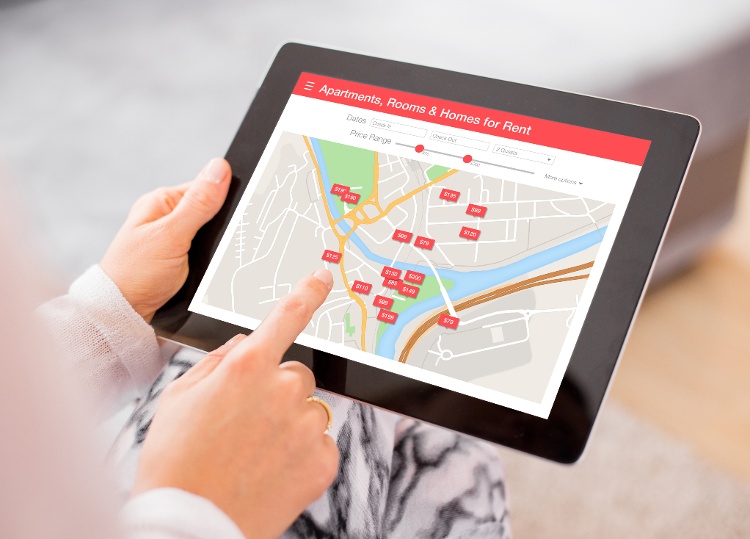It wasn’t that long ago that buyers, sellers, and real estate investors had to depend upon a real estate agent for comps. Today, home owners and investors can run their own comps using any computer with an internet connection.
In this article, we’ll explain how homeowners and investors use comps, what makes some comps better than others, and how to run your own comps.
Key takeaways
- Homeowners and investors run comps on recent sales of homes most similar to the home being sold or purchased, which is also known as the subject property.
- Homebuyers and sellers, real estate investors, appraisers, and real estate agents all use comps to help determine property value, and offer and asking price.
- Today’s technology and online resources allow homeowners and investors to run comps without the help of a real estate agent or the MLS.
- Factors to consider when choosing the best comps include the sale date, location of the comp, square footage, number of bedrooms and bathrooms, and lot size and shape.
What are comps?
Comps are records of recent sales transactions of nearby homes similar to the one an homeowner or investor has. In the real estate industry, a comp home is also known as a “comparable” and the home the comparable is being compared to is known as the “subject” property.
For example, imagine that the subject property (the one a homeowner or investor is thinking about selling or buying) is a 1,400 square foot single level, 3-bed/2-bath home with a 2-car garage on a 6,000 square foot lot.
Running comps on recent sales of homes most similar to the subject property can provide a starting point for estimating the property value for both buyers and sellers.

How are comps used?
Homeowners and investors use comps to help ensure that they don’t overpay for a property being purchased, or leave money on the table by underpricing a home that is being sold. In addition to buyers and sellers, comps are also run by real estate practitioners such as appraisers and real estate agents.
Home sellers
For sale by owners (FSBOs) and owners selling off the market run their own comps to help determine the fair market value and an accurate listing price for the property.
Comps can quickly change from one week to the next, or sometimes daily if the local real estate market is hot. Even when an owner is listing the home with a real estate agent, running your own comps is a good way to get a second opinion to help make sure the listing price is right.
Home buyers
Owners and investors buying off the market run comps to determine a fair price to pay for the home.
If the local real estate market is a buyer’s market, which means there are more homes available for sale than there are potential buyers, a buyer may decide to make an initial offer price lower than the comps.
On the other hand, if the market is a seller’s market where there are more buyers than available homes, a motivated buyer may decide to make an offer based on the price the comps suggest to avoid losing the deal to another home buyer or investor.
Appraisers
A real estate appraiser runs comps to verify that the price of the home that a buyer and seller agreed to in the purchase and sale agreement is justified by recent sales activity of similar properties.
If the purchase is being financed, a lender will hire an appraiser to run comps and assess the value of the home. Even when a home is being purchased for cash, some buyers will still hire an appraiser to run comps to double-check the property value.
Real estate agents
Agents use the multiple listing service (MLS) to run comps as part of a comparative market analysis, or CMA. Sometimes, a homeowner or investor selling off the market will ask a real estate agent to run comps to see what the home is worth. Even though an off market home isn’t listed on the MLS, a seller may still agree to pay a commission to a real estate agent who finds a ready, willing, and able buyer.
Can you run comps without a real estate agent?
Running comps without a real estate agent is completely doable with the technology and online resources available today.
In most counties, property records are public and can be found on the county assessors’ or tax collectors’ websites. Depending on the county, a homeowner or investor running comps may be able to download a CSV data file for a specific neighborhood or area. Then, open the CSV file with a spreadsheet program like Microsoft Excel, Numbers, or Google Sheets and search for recent sales comps using fields such as sale date or neighborhood.
Searching on Zillow or Redfin is another good way to run comps without a real estate agent. After selecting the neighborhood or zip code the subject property is located in, homeowners and investors can search for recent sales using criteria such as home type (such as single-family houses vs. multifamily), number of bedrooms and bathrooms, square feet, lot size, and year built.

Factors to include as part of your comps
Now let’s take a closer look at how to run your own comps. There are a variety of criteria to consider for finding the best comps for a subject property:
Location
Look for sales comps in the same neighborhood, city block, or area that the subject property is located in. For suburban area comps should be no more than ¼ to ½ mile from the subject property. The search area for urban comps may be even less, depending on how dense the neighborhood is.
Sale date
In an active real estate market where there is a high level of buying and selling, comps should be no older than 30 days. If comps similar to the subject property are hard to find, or if there isn’t a lot of activity in the market, an owner may push the search time frame back to the past 3 or 6 months.
Square footage
The best comps are ideally within 10% of the size of the subject home, or with a difference of no more than 300 square feet. For example, if the subject home has 1,800 square feet, search for comps that have a size of between 1,600 square feet and 2,000 square feet.
Bed/baths
Sales comps should have the same number of bedrooms and bathrooms as the subject property. Although a 3-bed/1-bath home may seem like a good comp for a 3-bed/2-bath home, an extra bathroom can make a big difference in the home value.
Lot size
Even in the same subdivision, lot sizes often differ from one home to the next. Generally speaking, a bigger lot can add more value to the home. However, factors such as the shape of the lot (for example, rectangular vs. triangle) and what is adjacent to the lot (such as backing to a busy highway) will affect the value of the comp and the subject property.
Construction date
Homes with a similar age and construction date make the best comps for the home being sold. That’s because the mechanical and structural systems like plumbing, heating and cooling, and the foundation and the roof will usually be in the same condition.
Updating
Sometimes adjustments have to be made to comps that have been recently updated, such as a new roof or a spa and gazebo in the backyard. If the comp is better than the subject property, the value of the comp is adjusted downward to match the subject property. If the comp is worse than the subject property, such as not having a new room when the subject property does, the value of the comp is adjusted upward.
Nearby amenities
Features and amenities of comps should be similar to the subject property. For example, having a high walk score, being close (but not too close) to major shopping areas, public transportation, school district, and neighborhood rating can all impact property value.
Price per square foot
After running comps and making any adjustments, divide the sales price of each comp by the property’s square footage to determine the average sales price per square foot. Then, multiply the square footage of the subject property by the sale price per square foot of the comps.
For example, if the subject property is 1,400 square feet the comps have an average per square foot sales price of $150, the subject property should be worth around $210,000.

Example of running your own comps
Here’s a simple example of how to run your own comps on a single-family rental home. After selecting three comparable homes that are most similar to the subject property, a chart is created to list the main characteristics of each home:
| Subject | Comp #1 | Comp #2 | Comp #3 | |
| Price | TBD | $160,000 | $145,000 | $150,000 |
| Sale Date | Pre-listing | 2 weeks | 1 month | 1 week |
| Square Footage | 1,500 | 1,600 | 1,500 | 1,550 |
| Bedrooms | 3 | 4 | 3 | 3 |
| Bathrooms | 2.5 | 3.5 | 2 | 2 |
| Garage | 2-car | 2-car | 2-car | 2-car |
| Condition | Good | Worse | Worse | Good |
| Lot Size (sq ft) | 6,000 | 7,000 | 6,000 | 5,500 |
The next step is to determine how much specific features increase or decrease the value of the comps compared to the subject home:
| Item | Value |
| Additional Square Feet | $120 |
| Bedroom | $6,000 |
| Bathroom | $3,500 |
| Improve Condition | $5,500 |
| Additional Lot Size (per sq ft) | $1 |
Once values are determined, the chart is revised to account for total adjustments to each comparable, and to adjust the sales price of each comparable. If a comp has a superior feature the value is deducted from the comp, and if the comparable has an inferior feature value is added to the comp:
| Subject | Comp #1 | Comp #2 | Comp #3 | |
| Price | $160,000 | $145,000 | $150,000 | |
| Sale Date | 2 weeks | 1 month | 1 week | |
| -$12,000 | -$6,000 | |||
| Square Footage | 1,500 | 1,600 | 1,500 | 1,550 |
| -$6,000 | ||||
| Bedrooms | 3 | 4 | 3 | 3 |
| -$3,500 | +$1,750 | +$1,750 | ||
| Bathrooms | 2.5 | 3.5 | 2 | 2 |
| Garage | 2-car | 2-car | 2-car | 2-car |
| Condition | Good | Worse | Worse | Good |
| +$5,500 | +$5,500 | |||
| Lot Size (sq ft) | 6,000 | 7,000 | 6,000 | 5,500 |
| -$1,000 | +$500 | |||
| Total Adjustment | -$17,000 | +$7,250 | -$3,750 | |
| Adjustment Price | $143,000 | $152,500 | $146,250 |
Based on the adjusted sales prices of the comps, the subject property should have a fair market value between $143,000 and $152,500.
However, Comp #2 has fewer adjustments and Comp #3 has the most recent sale date. By giving these last two comps more weighting, a more accurate valuation of the subject property could be in the $146,250 and $152,250 price range at the time the sales comparison approach was done.









